Sagaing travel - Myanmar, Asia
Sagaing, located about 20 km southwest of Mandalay along the banks of the Irrawaddy River, is renowned for its stunning landscape dotted with over 600 Buddhist pagodas and monasteries. Known historically as Zeyapura, or the "city of victory," Sagaing serves as an important religious center, attracting monks and meditation practitioners from across Myanmar.
The city is a spiritual hub, attracting monks and pilgrims, and is home to notable landmarks such as the iconic Kaunghmudaw Pagoda and U Min Thonze Cave, both of which showcase the area's architectural beauty and religious devotion. Visitors are drawn to Sagaing for its serene atmosphere, cultural experiences, and opportunities to engage with local crafts like silversmithing.
Population: Approximately 300.000 people as of 2024.
Economy: Agriculture is the chief occupation, with rice and wheat being the leading crops; Sagaing is responsible for over 80% of Myanmar's wheat production. The region also produces a variety of other crops, including sesame, peanuts, and pulses, benefiting from irrigation schemes that support farming in the dry zone.
In addition to agriculture, Sagaing has a significant industrial presence, including rice mills, edible oil production, and textile manufacturing. The area is rich in natural resources, with gold, coal, and salt being extracted, and it is known for its traditional crafts such as silverware and lacquerware.
Attractions: Kaunghmudaw Pagoda, Shwe Mohtaw Pagoda, Yadanar Zedi Sinmyar Shin Pagoda, Sagaing Hill, Soon U Ponya Shin Pagoda, U Min Thonze Cave, Sone Oo Pone Nya Shin Pagoda
Myanmar

Overview of Sagaing
History & Cultural Influence
Once a royal capital from 1760 to 1764, Sagaing is now renowned as a major religious center, home to over 600 monasteries and pagodas, which reflect its deep-rooted Buddhist heritage. The presence of these religious structures, including the iconic Kaunghmudaw Pagoda, showcases the city's architectural significance and its role as a pilgrimage site for Buddhists.
Historically, Sagaing was part of the Sagaing Kingdom, which existed from 1315 to 1365 and contributed to the region's political and cultural development. The city has been a hub for Theravada Buddhism, with many monks residing in the area, influencing both local governance and agricultural practices.
Interaction with The Locals
When interacting with locals in Sagaing, visitors can expect a warm and welcoming atmosphere characterized by the region's rich cultural and religious heritage. The population is diverse, predominantly consisting of Bamar people, along with significant communities of Shan, Naga, and Chin ethnic groups. This ethnic diversity contributes to a vibrant cultural tapestry and various local customs.
The general attitude towards tourists in Sagaing is friendly and hospitable, as locals often take pride in sharing their traditions and way of life. Visitors may find that many residents are eager to engage in conversation, share stories about their culture, and offer assistance. However, it is important to approach interactions with respect for local customs, especially in religious settings.
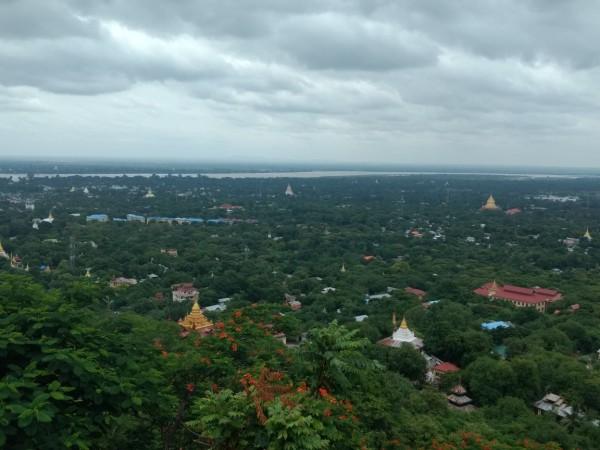
Sagaing Region - © gather
Top attractions in Sagaing
Known for its serene landscapes dotted with pagodas and monasteries, is a spiritual hub in Myanmar. These sites not only provide spiritual nourishment but also offer deep insights into Sagaing's rich Buddhist traditions.
Kaunghmudaw Pagoda
Location: On the northwestern outskirts of Sagaing
The iconic Kaunghmudaw Pagoda, recognized for its unique dome-shaped stupa, stands as a significant religious site in the region. Its structure reflects the traditional Burmese architectural style and serves as a focal point for pilgrimage and cultural heritage.
Sagaing Hill
Location: Southwest of Sagaing city center
Sagaing Hill, adorned with numerous pagodas and monasteries, offers breathtaking views of the Irrawaddy River and the surrounding plains. This area is renowned for its tranquility and is a popular destination for meditation, providing a serene retreat from the bustling city life.
U Min Thonze Cave
Location: atop of Sagaing Hill
U Min Thonze Cave is celebrated for its striking row of Buddha statues set within a picturesque cave. This site attracts pilgrims and tourists alike, offering a peaceful setting for spiritual reflection and insight into local Buddhist practices.
Mingun Pahtodawgyi
Location: In Mingun, about 1 hour across the river from Sagaing
Known for its colossal structure, Mingun Pahtodawgyi is an awe-inspiring sight as an unfinished pagoda initially intended to be the world's largest. The site also features the Mingun Bell, claimed to be the largest ringing bell globally, adding to its historical significance.
Mya Thein Tan Pagoda
Location: in a small town called Mingun, Near Sagaing
The Mya Thein Tan Pagoda, with its distinctive seven-tiered design, is surrounded by lush gardens, making it an idyllic spot for relaxation and spiritual rejuvenation. The pagoda's architecture and tranquil surroundings attract those seeking peace and beauty.
Phoe Win Tuang Cave
Location: on the western bank of the Chindwin River
Phoe Win Tuang Cave is a revered site housing hundreds of Buddha images, representing the devotion and religious heritage of the region. It is a significant meditation and reflection site, reflecting the deep spiritual roots of the local community.
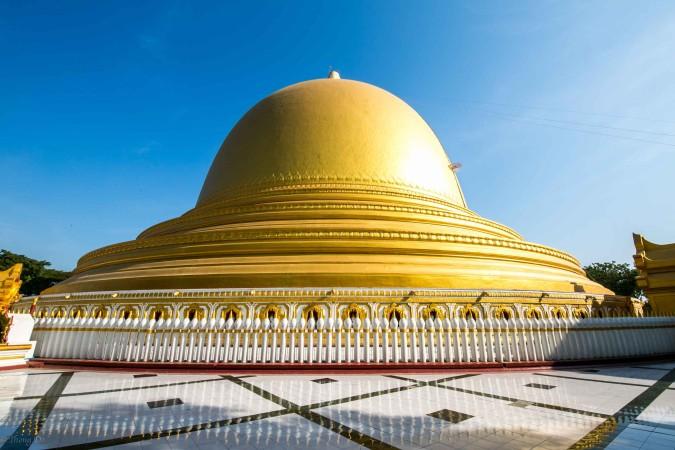
Kaunghmudaw Pagoda - © gather
Must-Try Dishes in Sagaing
Sagaing offers a tantalizing array of traditional Burmese dishes that reflect the region's rich culinary heritage. From a savory fish broth noodle soup to the Tea Leaf Salad, combines fermented tea leaves with a crunchy mix of nuts and seeds, offering a unique blend of textures and flavors that is both refreshing and distinctly Burmese. These dishes not only satisfy the palate but also provide a deep dive into the traditional food culture of Sagaing.
Mohinga
Mohinga is often considered the national dish of Myanmar, featuring a savory fish broth soup served with rice noodles. It is commonly enhanced with boiled eggs, cilantro, and crispy fritters. As a staple breakfast item, Mohinga exemplifies the local preference for flavorful, hearty meals and highlights the region's abundant fish resources.
Ohn No Khao Swe
Ohn No Khao Swe is a rich coconut milk-based noodle soup with chicken, traditionally served with egg noodles and garnished with onions, lime, and sometimes boiled eggs. This dish reflects the influence of Indian cuisine in Myanmar, particularly in Sagaing, where the use of coconut milk is prevalent.
Shan Tofu
Shan Tofu, made from chickpea flour, presents a soft, custard-like texture and is typically served in salads or fried. This dish is unique to the Shan State and popular in Sagaing, showcasing the region’s use of local agricultural products and traditional cooking techniques.
Laphet Thoke (Tea Leaf Salad)
Laphet Thoke is made from fermented tea leaves mixed with nuts, peas, garlic, and sesame oil, and is often served with a variety of toppings. As a cultural delicacy in Myanmar, it symbolizes hospitality and community, commonly enjoyed during social gatherings.
Grilled Fish
Freshwater fish from the Irrawaddy River is grilled and seasoned with local spices and herbs to create this dish. Grilled fish is a popular choice in Sagaing, reflecting the region’s rich aquatic resources and the local preference for fresh, flavorful ingredients.
Htamin Jin (Rice Salad)
Htamin Jin is a resourceful salad made from leftover rice mixed with various vegetables, herbs, and sometimes meat, served cold. This dish exemplifies the practical and delicious ways local cuisine utilizes leftover ingredients, showcasing the resourcefulness of the region’s food practices.

Mohinga - © gather
Festivals & Local Celebrations
Kaunghmudaw Pagoda Festival
When: Early to mid-November
Takes place on the Full Moon day of Tazaungmon and features unique sights like locals arriving in oxcarts and bringing hand-woven cloths and mats. Visitors can watch traditional Myanmar puppet shows and admire the scenic view of Sagaing.
Naga New Year Festival
When: March 20
Also known as the Naga National Day, this festival celebrates the Naga ethnic group and attracts tourists to join in the celebration while enjoying Sagaing's natural beauty.
Shwe Kyin Light Festival
When: October, after the Full Moon Day of Thadingyut
Celebrated in the Bago Region but is worth mentioning for Sagaing visitors. It features boat races, traditional dance and music performances on boats, and the mesmerizing release of lit paper lanterns onto the river, believed to bring good luck
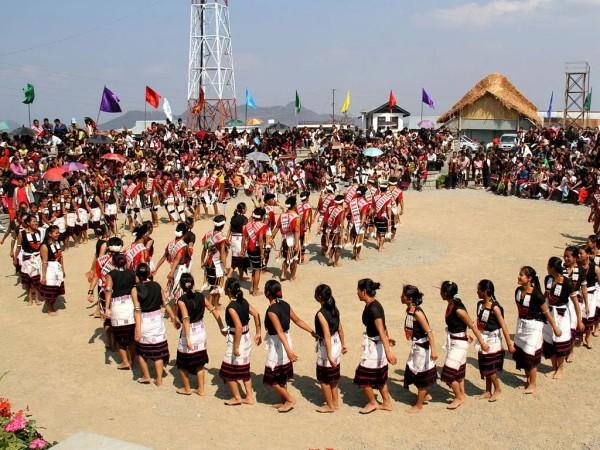
Naga New Year Festival - © gather
Weather in Sagaing: Best Time to Visit
Sagaing experiences a hot semi-arid climate, characterized by distinct wet and dry seasons. Here are the key details about its weather and climate:
Average Temperatures
- Yearly Average: Approximately 27.8°C (82°F).
- Warmest Month: April, with average highs reaching around 38.3°C (100.9°F).
- Coldest Month: January, with average lows around 14.5°C (58.1°F).
Rainfall
- Annual Precipitation: About 804 mm (31.65 inches), with the rainy season typically lasting from May to October.
- Wettest Months: July and August receive the highest rainfall, averaging around 66.2 mm (2.61 inches) and 126.2 mm (4.97 inches), respectively.
Best Time to Travel
- Optimal Travel Period: The best time to visit Sagaing is during the dry season from November to February when temperatures are cooler and rainfall is minimal, making it ideal for outdoor activities and sightseeing.
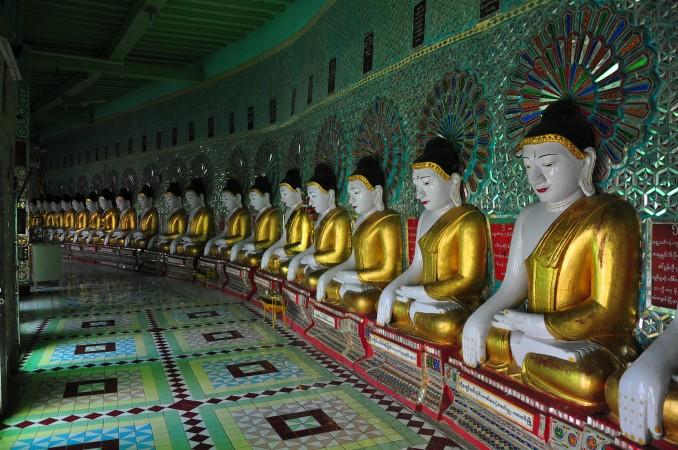
U Min Thonze Cave - © Roger Price
Culture Etiquette in Sagaing
Respect for Monks and Temples
- Dress modestly, covering shoulders and knees, when visiting temples and monasteries.
- Remove shoes before entering religious buildings.
- Avoid touching monks or passing objects over their heads.
- Do not point your feet towards Buddha images or monks.
Greetings and Interactions
- Greet elders and those in positions of authority with respect, using "U" for older men and "Daw" for older women.
- Avoid touching someone's head, as it is considered the most sacred part of the body.
- Use your right hand when giving or receiving items, as the left hand is traditionally associated with unclean tasks.
- Bow your head slightly when walking in front of someone senior who is seated.
Dress Code
- Wear modest, conservative clothing that covers shoulders and knees, especially when visiting religious sites.
- Remove shoes before entering temples, monasteries, homes, and sometimes even offices.
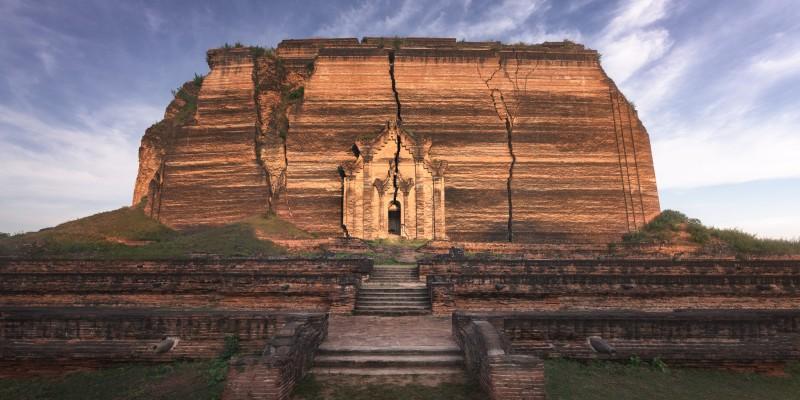
Mingun Pahtodawgyi pagoda - © Andrey Omelyanchuk
Essential Travel Information
Getting to Sagaing
From Mandalay: Located just 20 km (12 miles) southwest of Mandalay, Sagaing is easily accessible.
- Taxi: Taxis are a convenient option, with fares typically around USD 10 (MMK 15,000) for the trip from Mandalay to Sagaing.
- Bus: Local buses run frequently between the two cities, offering an affordable and budget-friendly way to travel.
Public Transit
- Buses: Sagaing has a network of local buses that connect different parts of the city and nearby attractions. They are a low-cost option, though schedules can vary.
Taxis and Ride-Sharing
- Taxis: Taxis are widely available in Sagaing, and fares should be negotiated before starting your journey. Expect to pay about USD 3-5 for short trips within the city.
- Ride-Sharing: While popular apps like Grab might not be widespread, local taxis can often be hired through phone apps or hailed directly on the street.
River Transportation
- Boat Rides: The Irrawaddy River offers scenic boat trips, giving travelers a unique perspective of the river and surrounding landscapes. These rides often showcase local life, including traditional fishing activities.
Local Transportation
- Bicycles and Motorbikes: Renting a bicycle is a great way to explore Sagaing at your own pace. Motorbike taxis are also available, but it's best to use them with caution for safety reasons.
Accommodation Choices
Sagaing offers a variety of accommodations to suit all budgets:
Budget Hotels:
- Shwe Pyi Thar Hotel
- Sagaing City Hotel
- Sagaing View Hotel
Mid-Range Hotels:
- Yadanarbon Hotel
- Sagaing Hill Resort
- Sagaing Palace Hotel
Luxury Resorts:
- Sagaing Hill Resort
- Sagaing View Resort
- Yadanarbon Resort
Hostels and Guesthouses are available in Sagaing City Center for budget-conscious travelers, while Airbnb offers private apartments and short-term rental options for a more personalized stay.
Articles for you
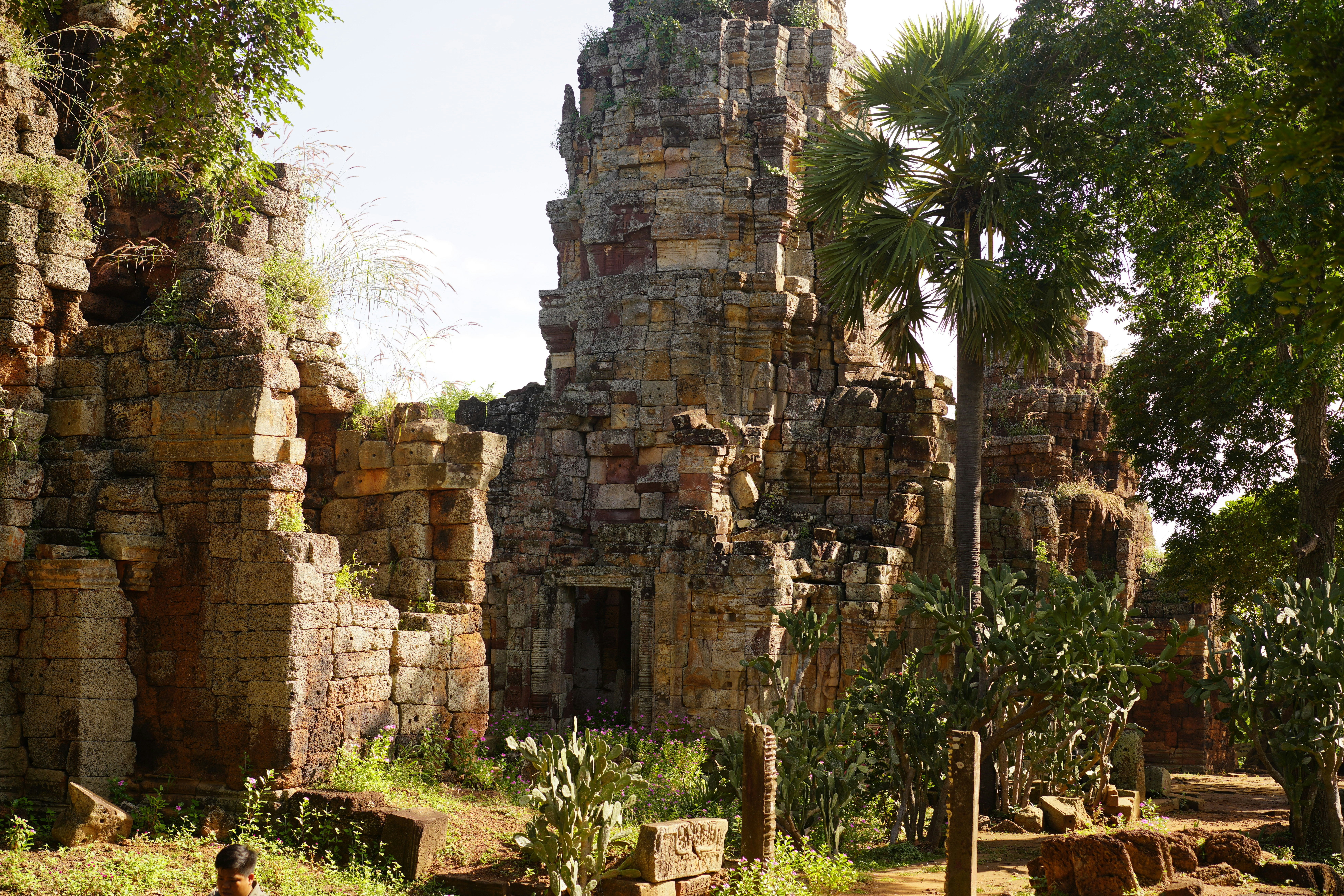
Explore Battambang - Cambodia Travel, Asia
Battambang is the soulful heart of northwest Cambodia. This is a city where time slows down and stories unfold at every turn. Known as the country’s second-largest city, it charms travelers with a rare blend of French colonial architecture, vibrant art spaces, and lush countryside landscapes. Unlike the tourist bustle of Siem Reap or Phnom Penh, Battambang offers a gentler rhythm, inviting visitors to cycle past rice paddies, meet local artisans, and soak up the authentic Khmer way of life.
Population: Approximately 120,000 in 2019.
Economy: Battambang’s economy is rooted in agriculture, earning it the title “Cambodia’s rice bowl.” Beyond farming, small-scale industries like rice milling, fish processing, and handicrafts support local livelihoods. Tourism is an expanding pillar, with visitors drawn to cultural sites, art spaces, and eco-tourism experiences.
Landmarks: Famous for The Bamboo Train, Phnom Sampeau, and the Wat Banan Temple.
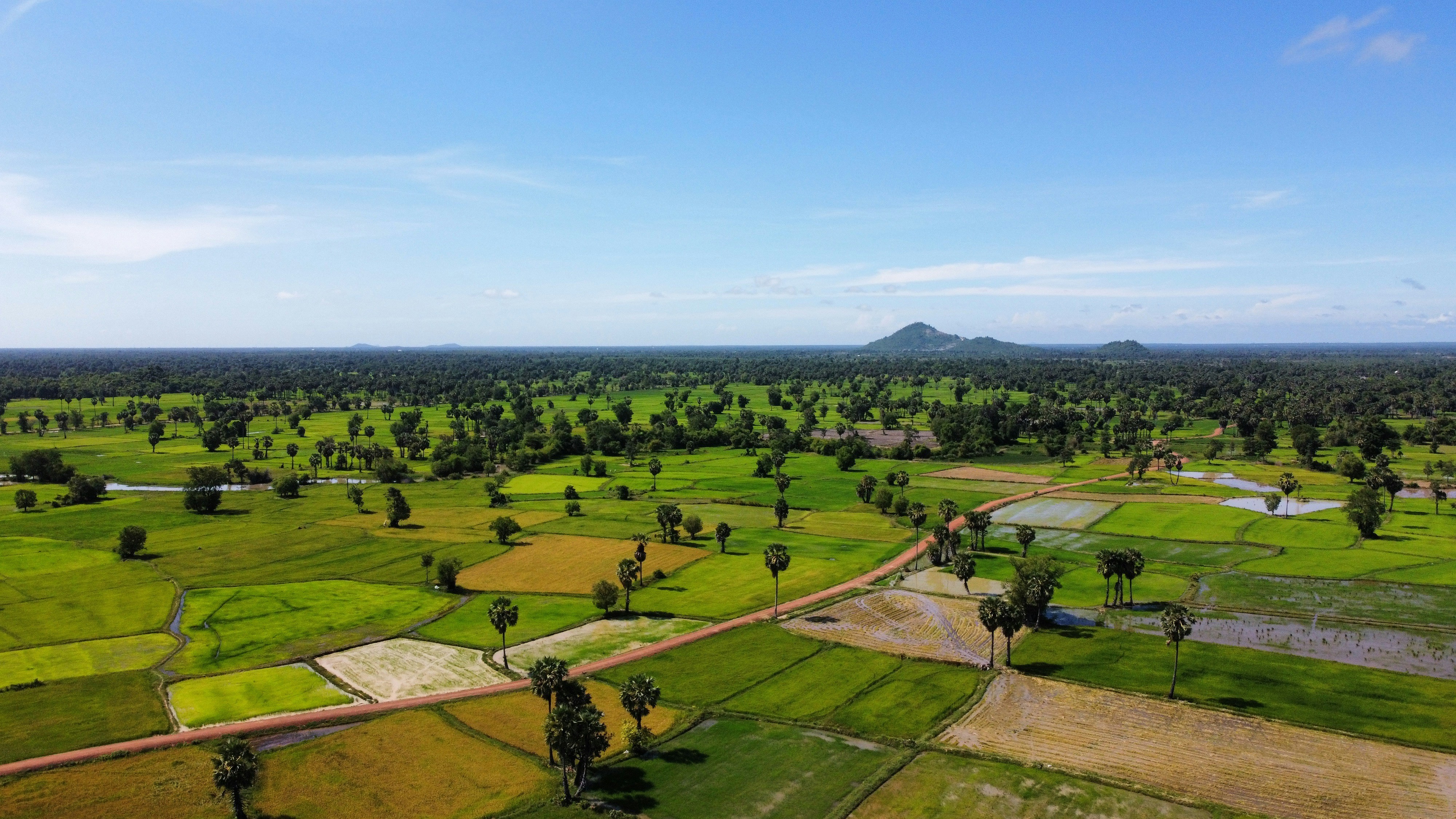
Explore Kampong Chhnang - Cambodia Travel, Asia
Set on the banks of the Tonlé Sap River, Kampong Chhnang is one of Cambodia’s most enchanting provinces, a place where the Khmer Empire’s legacy, floating villages, and pottery traditions meet. Only 90 km from Phnom Penh, this riverside town offers travelers a glimpse of authentic Cambodia far from the bustle of tourist hotspots. Known as the country’s “Pottery Capital,” Kampong Chhnang draws visitors with its handcrafted ceramics, vibrant river markets, and sweeping views of rice paddies.
Population: Approximately 600,000 in 2024.
Economy: Kampong Chhnang’s economy revolves around agriculture, fishing, and traditional crafts. The fertile plains along the Tonlé Sap River support rice farming, making the province one of Cambodia’s key rice producers. Fishing and aquaculture thrive thanks to the river and nearby Tonlé Sap Lake. Small-scale trade, markets, and growing eco-tourism add to local income
Landmarks: Famous for the Andong Russey Pottery Village, Floating Villages on the Tonlé Sap, and the Phnom Santouch Hill.

Explore Xiangkhouang - Laos Travel, Asia
Nestled in the misty highlands of northern Laos, Xiangkhouang is a province where ancient legends meet living heritage. Home to the enigmatic Plain of Jars, Xiangkhouang invites travelers to step off the beaten path and uncover a land shaped by war, resilience, and timeless traditions. Whether you’re an explorer drawn to megalithic wonders, a cultural traveler seeking human connection, or a nature lover craving serene landscapes, Xiangkhouang promises something uniquely unforgettable.
Population: Approximately 278,000 in 2025.
Economy: Xiangkhouang’s economy is largely driven by agriculture, tourism, and small-scale trade. The fertile plains and cooler climate support many types of crops and livestock farming. In recent years, tourism has emerged as a growing sector, thanks to the Plain of Jars and eco-cultural experiences attracting both domestic and international travelers.
Landmarks: Famous for the Plain of Jars, Muang Khoun, and Tad Ka Waterfall.
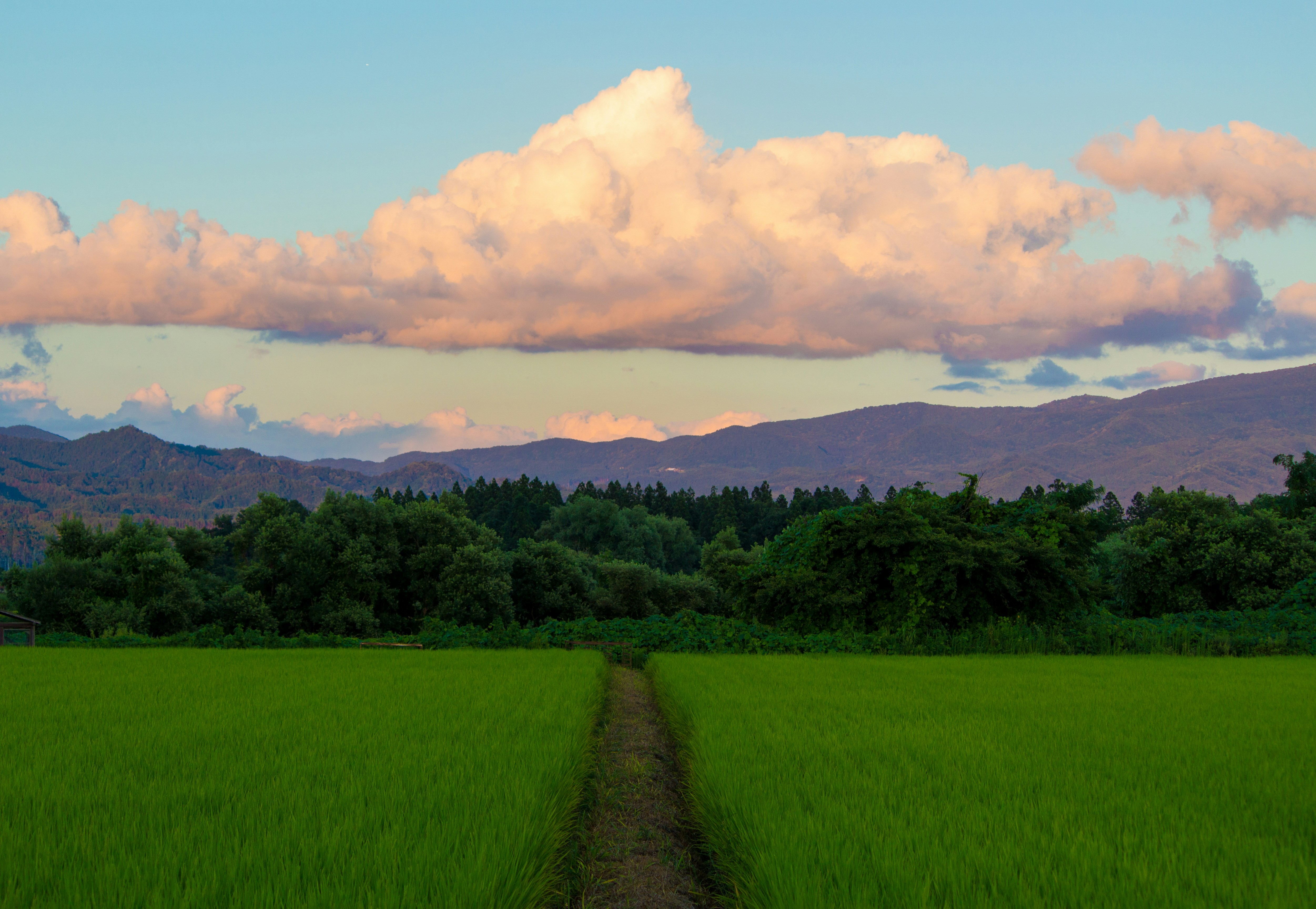
Explore Fukushima - Japan Travel, Asia
Nestled in Japan's scenic Tohoku region, Fukushima offers travelers a unique blend of historical charm, cultural richness, and natural beauty. Known for its stunning landscapes and welcoming communities, Fukushima is an excellent destination for those seeking an authentic Japanese experience beyond the bustling metropolises. Renowned for its diverse attractions, from ancient castles and hot springs to vibrant festivals and picturesque countryside, Fukushima offers a great opportunity for cultural and historical exploration for anyone who loves Japanese culture.
Population: Approximately 1.8 million in 2023.
Economy: Specializing in the seafood and fishing industries, Fukushima, with its historical impacts, now continues to thrive as one of the most developed and largest economies in Japan.
Landmarks: Famous for Aizu-Wakamatsu Castle, Fukushima City Historical Museum, and Ouchi-juku.
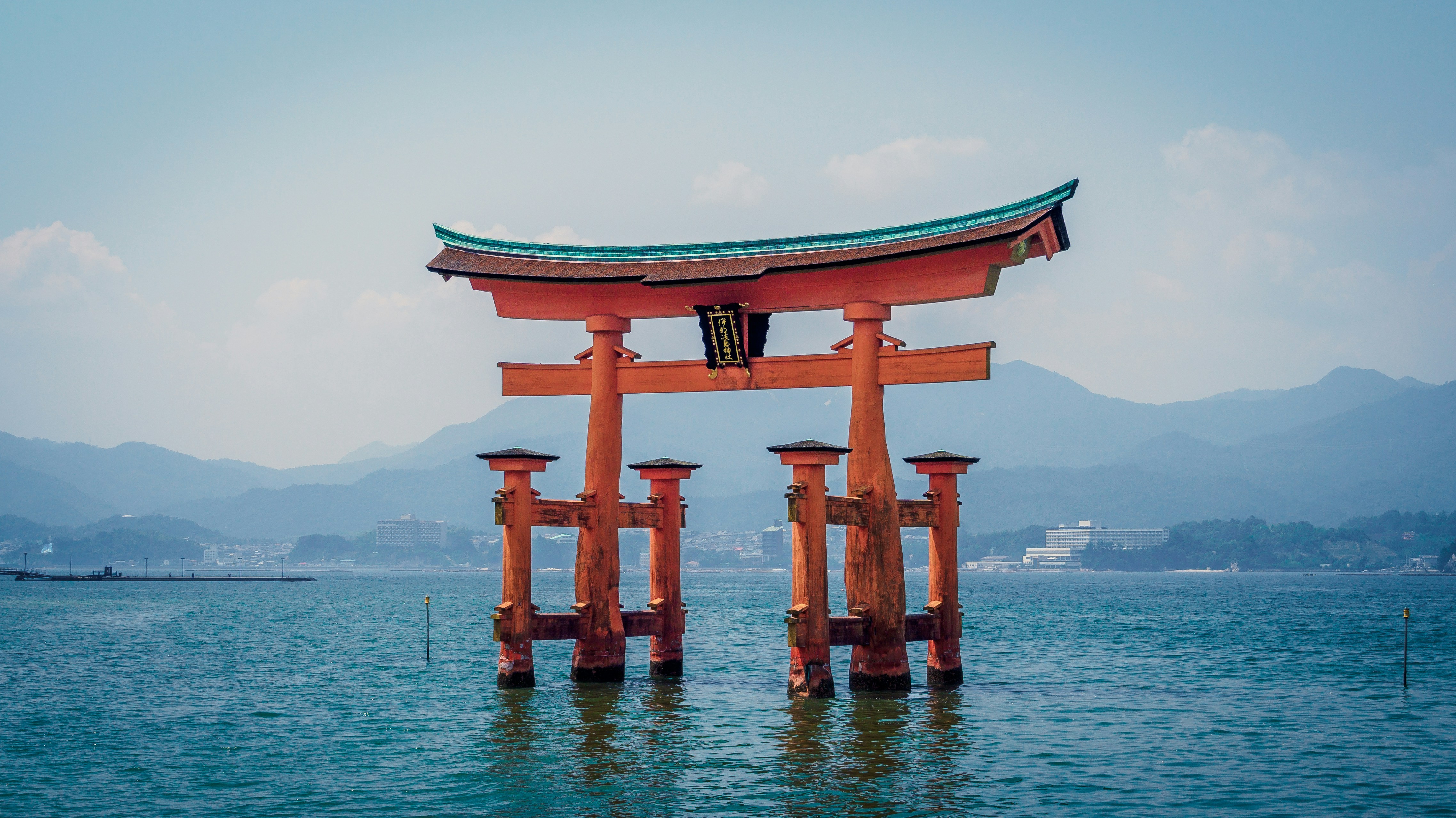
Explore Itsukushima (Miyajima) - Japan Travel, Asia
Floating gently in the tranquil waters of the Seto Inland Sea, Miyajima, officially known as Itsukushima, is one of Japan’s most treasured islands. Just a short ferry ride from Hiroshima, this peaceful destination draws travelers with its spiritual energy, ancient shrines, and wild-yet-gentle sacred deer that roam freely. Renowned for the iconic floating Torii gate of Itsukushima Shrine, Miyajima blends centuries of Shinto belief, Buddhist tradition, and natural beauty into one unforgettable journey.
Population: Approximately 1,500 in 2019.
Economy: Miyajima’s economy is deeply rooted in tourism. Visitors fuel local businesses such as traditional inns (ryokan), souvenir shops, street food vendors, and ferry services.
Landmarks: Famous for Itsukushima Shrine and the Floating Torii Gate, Mount Misen, and the Daisho-in Temple.

Explore Anuradhapura - Sri Lanka Travel, Asia
Anuradhapura is not just a place to visit, it’s a place to feel. Nestled in Sri Lanka’s North Central Province, this UNESCO World Heritage Site invites travelers to walk among sacred stupas, ancient ruins, and vibrant rituals that span over two millennia. Known as one of the world’s oldest continuously inhabited cities, Anuradhapura blends religious reverence, royal history, and everyday village life. Whether you’re a spiritual seeker, a history lover, or a curious wanderer, this ancient city offers a deep and memorable journey into the heart of Sri Lanka’s cultural identity.
Population: Approximately 950,000 in 2022.
Economy: Anuradhapura’s economy is primarily driven by agriculture, religious tourism, and small-scale trade. The region is known for rice farming, supported by ancient irrigation systems. Tourism, linked to its UNESCO World Heritage status, also plays a vital role, in supporting local businesses, guides, and hospitality services.
Landmarks: Famous for the Sri Maha Bodhi Tree, Ruwanwelisaya Stupa, and Jetavanaramaya Monastery.
